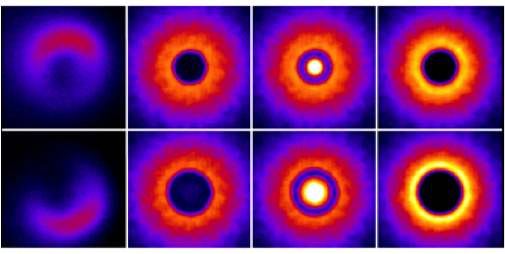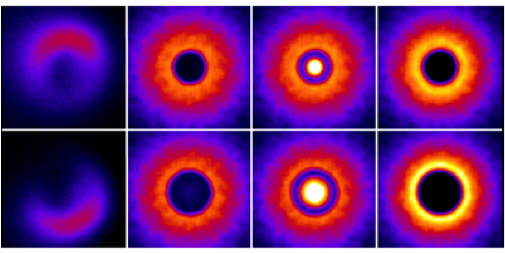Electron Snapshots of Fast Fields
Intense laser pulses easily vaporize solid surfaces, creating laboratory-scale plasmas that are valuable in inertial confinement fusion research and astrophysics. These plasmas are complex and fast moving, so methods of detecting their vital signs such as density and magnetic field strength are essential. Using ultrashort laser pulses, Will Schumaker at the University of Michigan, Ann Arbor, and colleagues have imaged the rapidly expanding magnetic fields in a surface plasma by observing how energetic electrons pass through it, as they now report in Physical Review Letters.
The authors first direct an intense femtosecond laser pulse at a thin solid target to create the plasma. To probe the plasma, they use a second short laser pulse to generate a burst of relativistic electrons: the laser pulse hits a stream of helium and nitrogen gas, ionizes it, and creates a laser-driven, relativistic plasma wave that accelerates electrons. As the electrons shoot out from the gas jet and into the laser-solid plasma under study, they are deflected by the magnetic field in the plasma, and their spatial distribution on the other side reflects the field structure. By adjusting the delay between the pulse hitting the solid target and the probe electron pulse, the authors can make a movie of the plasma evolution.
Schumaker et al. captured radiographs of the magnetic fields moving through plasmas created with both metal and plastic targets. This proof of principle shows that the technique may be useful for diagnosing other quickly changing plasmas. – David Voss





